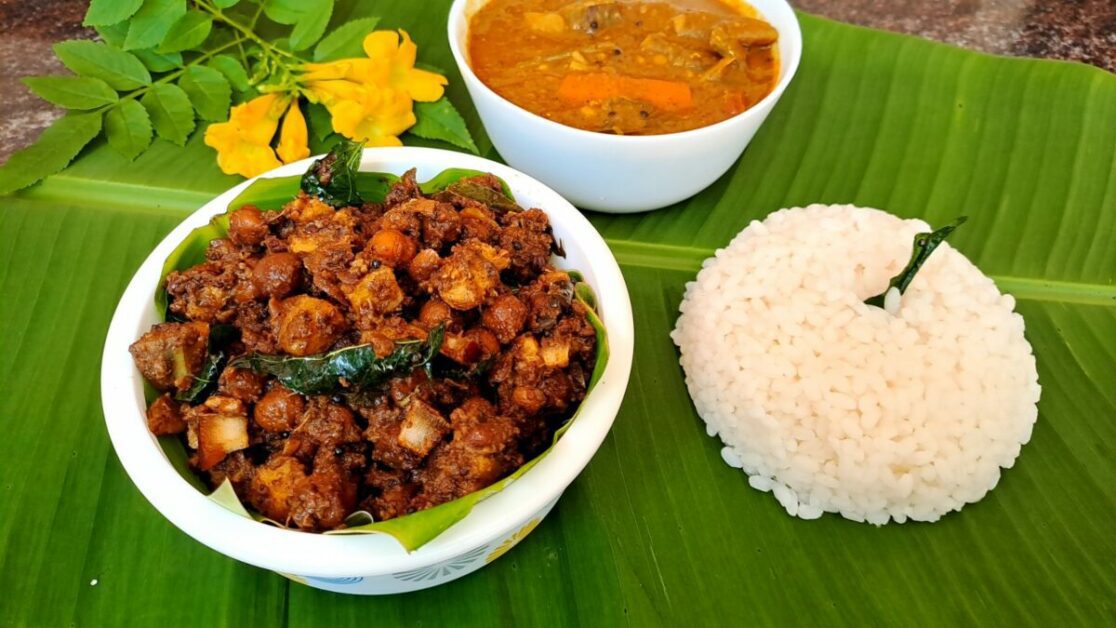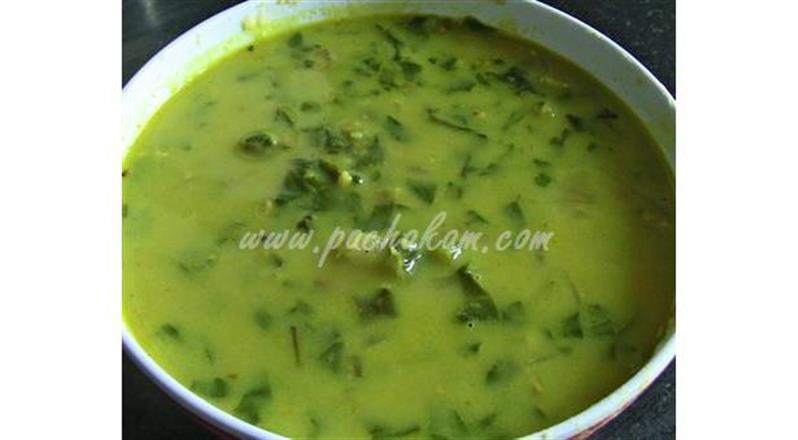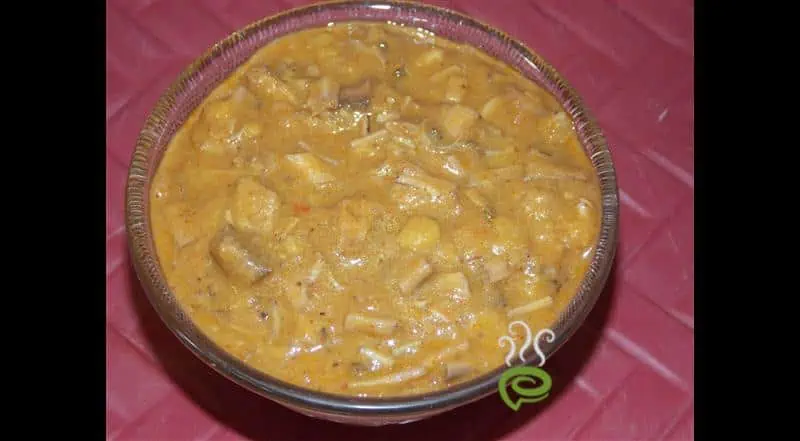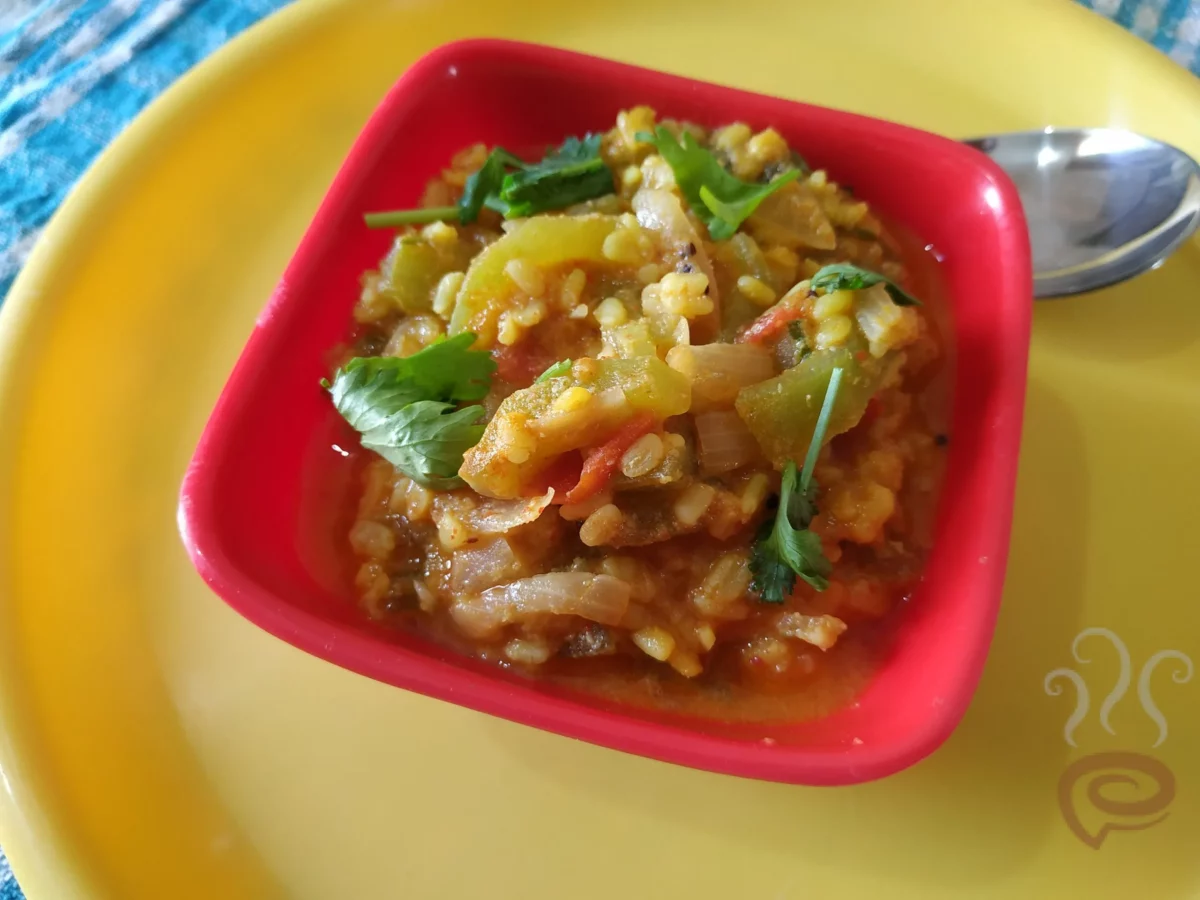Kootu Curry: A Nutritious Highlight of Kerala’s Traditional Sadya
In Kerala, food is more than just sustenance; it’s a celebration of culture, tradition, and community. A traditional Sadya, the elaborate feast served during festivals like Onam and Vishu, is a testament to this celebration. Among the array of vibrant dishes served on a banana leaf, Kootu Curry stands out as a beloved favorite, offering a perfect blend of vegetables, lentils, and spices. It showcases the rich flavors of Kerala cuisine, known for its use of fresh ingredients and coconut-based gravies. Let’s explore what makes Kootu Curry so special, along with a detailed recipe and its cultural significance.
What is Kootu Curry?
Kootu Curry, also known as Koottukari, is a hearty and nutritious dish that combines vegetables and lentils in a thick, coconut-based gravy. It is traditionally served as part of a Sadya, where its mild yet rich flavors balance the variety of spicy, tangy, and sweet dishes on the menu. The dish typically features a combination of vegetables like ash gourd, yam, and raw bananas, paired with black chickpeas (kadala) or Bengal gram, simmered in a spiced coconut paste and tempered with coconut oil, mustard seeds, curry leaves, and red chilies.

Popular Kootu Curry Varieties
1. Kerala Style Koottu Curry
Kerala Style Koottu Curry is a traditional Sadya dish featuring a medley of root vegetables such as yam, raw bananas, and ash gourd, combined with black chickpeas (kadala). This version is characterized by its thick, coconut-based gravy, flavored with cumin and green chilies, and tempered with mustard seeds, curry leaves, and red chilies in coconut oil. It is a hearty, mildly spiced dish that balances the array of flavors on a Sadya platter, making it a staple during festive meals like Onam and Vishu.
2. Kootu Kari
Kootu Kari is a simpler variant of the traditional Koottu Curry, typically made with a single type of vegetable, such as ash gourd or pumpkin, cooked in a coconut gravy. This dish emphasizes the natural sweetness of the vegetable, complemented by a subtle blend of spices like cumin and pepper. It is ideal for everyday meals when a lighter, uncomplicated side dish is desired, and it pairs well with steamed rice.
3. Sadya Special Kootu Curry
Sadya Special Kootu Curry is an enhanced version of the traditional recipe, incorporating a variety of spices and a mix of vegetables for a richer, more festive dish. This version often includes ingredients like drumsticks, raw banana, and carrots, alongside chickpeas or Bengal gram. The addition of aromatic spices such as coriander, turmeric, and garam masala elevates the flavors, making it a standout dish that adds a festive flair to the Sadya.
4. Kadala and Chena Kootu Curry
Kadala and Chena Kootu Curry is a robust dish combining black chickpeas (kadala) and yam (chena). The yam adds a starchy texture, while the chickpeas provide a protein boost, making it a satisfying and nutritious option. Cooked in a coconut-based sauce with tempered spices, this Kootu Curry is perfect for those seeking a hearty and wholesome accompaniment to rice.
5. Pollachi Spinach (Keerai) Kootu
Pollachi Spinach Kootu, also known as Keerai Kootu, incorporates spinach into the traditional Kootu Curry recipe, adding a nutritious green element. This version is light and packed with the goodness of spinach, combined with moong dal or Bengal gram in a mildly spiced coconut gravy. It’s an excellent way to include leafy greens in your diet while enjoying the comforting flavors of Kootu Curry.

6. Vallarai Kootu (Brahmi Leaves)
Vallarai Kootu utilizes Brahmi leaves, known for their medicinal properties and brain-boosting benefits. This version of Kootu Curry combines the earthy flavor of Brahmi leaves with lentils, creating a nutritious dish that is both wholesome and flavorful. The coconut-based gravy is gently spiced, allowing the distinct taste of the Brahmi leaves to shine through.
7. Pudina Ela Thayir Kootu
Pudina Ela Thayir Kootu is a refreshing, mint-flavored variant of Kootu Curry that incorporates fresh mint leaves (pudina) and a yogurt-based gravy. This dish is lighter and tangier compared to the traditional coconut-based versions, with the mint adding a burst of freshness. It’s a great option for summer meals, providing a cooling effect and a unique twist on the classic Kootu.
8. Vazhaipoo Koottu (Plantain Flower Kootu)
Vazhaipoo Koottu is made with banana flowers, which are rich in nutrients and possess a distinct, slightly bitter flavor. This version of Kootu Curry combines banana flowers with lentils in a spiced coconut sauce, creating a dish that is both flavorful and beneficial for digestion. The preparation requires careful cleaning of the banana flowers, but the result is a nutritious and delicious dish that stands out on any menu.

9. Milagu Kootu
Milagu Kootu is a pepper-based version of Kootu Curry that offers a spicy kick. This dish is prepared with vegetables like ash gourd or pumpkin, cooked in a coconut and black pepper sauce. The pepper adds a warmth and depth of flavor, making it perfect for those who enjoy a bit of heat in their meals. It is often consumed during colder weather or when recovering from a cold, thanks to the warming properties of black pepper.
10. Moong Dal Pudalangai Kootu
Moong Dal Pudalangai Kootu features moong dal and snake gourd (pudalangai), creating a light and healthy option that is easy on the stomach. The combination of moong dal, which is gentle and easy to digest, with the crisp texture of snake gourd, results in a delicate, mildly spiced dish. This Kootu is ideal for everyday meals, especially when paired with steamed rice or chapatis.

The Cultural Significance of Kootu Curry in Kerala Sadya
Kootu Curry is more than just a dish; it’s an integral part of the Sadya experience. A Sadya, with its symphony of flavors and textures, represents the diversity of Kerala’s culinary heritage. Kootu Curry’s unique combination of vegetables and lentils adds a wholesome element to the feast, contributing both taste and nutrition.
Key Features of Kootu Curry:
- Nutritional Value: Packed with fiber, protein, and essential nutrients from the vegetables and lentils, Kootu Curry is a balanced dish that complements the carbohydrate-heavy Sadya.
- Flavor Profile: The dish has a mild sweetness from the coconut and vegetables, balanced with the earthy taste of lentils and the subtle heat from the tempering spices.
- Festive Essence: As a staple of Onam and Vishu celebrations, Kootu Curry carries the festive spirit, making it a cherished part of Kerala’s culinary traditions.
Traditional Kootu Curry Recipe: How to Make This Festive Favorite
Preparing Kootu Curry at home is a rewarding experience that brings the authentic taste of Kerala’s Sadya to your dining table. Here’s a step-by-step Kootu Curry Kerala Sadya recipe that captures the essence of this beloved dish.
Ingredients
- 1 cup black chickpeas (kadala) or Bengal gram (soaked overnight)
- 1 cup mixed vegetables (yam, ash gourd, raw banana, sliced into cubes)
- 1/2 teaspoon turmeric powder
- Salt to taste
- 1 cup grated coconut
- 1 teaspoon cumin seeds
- 2-3 green chilies
- 1 teaspoon black peppercorns
- 1 teaspoon mustard seeds
- 2 dried red chilies
- 1 sprig curry leaves
- 1 tablespoon coconut oil
- 2 tablespoons grated jaggery (optional, for slight sweetness)
Step-by-Step Preparation
- Cook the Lentils: Rinse the soaked black chickpeas or Bengal gram and pressure cook with a pinch of salt and enough water until tender. Drain and set aside.
- Prepare the Vegetables: In a large pot, add the cubed vegetables, turmeric powder, salt, and enough water to cook. Cover and cook until the vegetables are tender but not mushy.
- Make the Coconut Paste: Grind the grated coconut, cumin seeds, green chilies, and peppercorns into a coarse paste using minimal water. This paste forms the base of the curry and gives Kootu Curry its creamy texture and flavor.
- Combine Lentils and Vegetables: Once the vegetables are cooked, add the cooked chickpeas or Bengal gram to the pot. Mix well and allow them to simmer together for a few minutes.
- Add the Coconut Paste: Stir in the ground coconut paste and adjust the consistency by adding a little water if necessary. Simmer for a few minutes, allowing the flavors to meld together. If you prefer a hint of sweetness, add grated jaggery at this stage and mix well.
- Prepare the Tempering: In a small pan, heat coconut oil and add mustard seeds. Once they splutter, add dried red chilies and curry leaves. Pour this tempering over the Kootu Curry and mix well.
- Serve: Kootu Curry is best served warm, alongside steamed rice and other Sadya dishes. Its rich, creamy texture and mild flavor provide a perfect counterbalance to spicier dishes in the feast.
Tips for Making Perfect Kootu Curry
- Choose Fresh Vegetables: Using fresh, seasonal vegetables enhances the taste and texture of Kootu Curry. Popular choices include yam, raw bananas, ash gourd, and carrots.
- Adjust the Spice Level: While Kootu Curry is traditionally mild, you can adjust the heat by varying the number of green chilies or black pepper used in the coconut paste.
- Consistency Matters: The dish should have a thick consistency, not too watery or too dry. Adding water gradually helps achieve the right balance.
Variations of Kootu Curry
Kootu Curry can be customized in several ways to suit different tastes and dietary preferences:
- Using Different Lentils: While black chickpeas are a common choice, you can also use Bengal gram, green gram, or even pigeon peas for variation.
- Adding Vegetables: Depending on availability and preference, you can add other vegetables like pumpkin, potatoes, or snake gourd.
- Spice Variations: Some versions of Kootu Curry include the addition of coriander powder or fenugreek seeds in the coconut paste for a different flavor profile.
Kootu Curry Recipe in Malayalam
For those who prefer cooking in the native language, here’s a brief outline of the Kootu Curry recipe in Malayalam:
- പാകംചെയ്യേണ്ട ചേരുവകൾ: കടല, കരണ്ട, കൂവക്ക, ചക്ക, മഞ്ഞൾപൊടി, ഉപ്പ്, തേങ്ങാ, ജീരകം, പച്ചമുളക്, കുരുമുളക്, കടുക്, വെളിച്ചെണ്ണ, കാരപ്പൊടി.
- പാചകം: കടല വേവിക്കുക. പച്ചക്കറികൾ വേവിച്ച്, തേങ്ങ മിശ്രിതം ചേർത്ത് കലരിപ്പിക്കുക. കടുക്, കറിവേപ്പില, വെളിച്ചെണ്ണ ചേർത്ത് മൂടുക.
Conclusion
Kootu Curry is more than just a dish on the Sadya platter; it’s a reflection of Kerala’s love for wholesome, flavorful, and nutritious food. Its unique blend of vegetables, lentils, and coconut, combined with the fragrant tempering, makes it a must-have during festive celebrations. Whether you’re preparing it for Onam, Vishu, or a simple family meal, Kootu Curry promises to bring the authentic taste of Kerala to your table. So, gather your ingredients, follow the recipe, and enjoy the comforting flavors of this traditional Kerala dish.
Frequently Asked Questions
-
Is Kootu Curry vegan?
Yes, Kootu Curry is naturally vegan as it uses plant-based ingredients like vegetables, lentils, coconut, and spices without any animal products.
-
Can I prepare Kootu Curry in advance?
Kootu Curry can be prepared a day in advance and stored in the refrigerator. The flavors often deepen and improve with time. Reheat gently before serving.
- What are the health benefits of Kootu Curry?
Kootu Curry is rich in fiber, vitamins, and protein from the combination of vegetables and lentils. The coconut base adds healthy fats, making it a nutritious addition to the meal.

